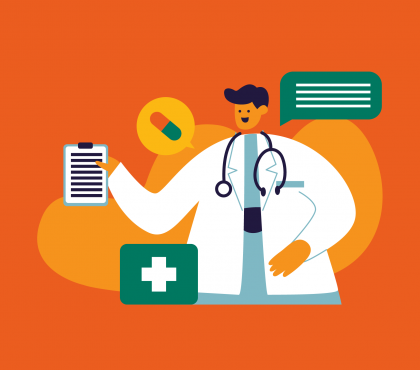The problem of transferring complicated information but still keeping learners engaged has been solved by the new application of animation in education. Simple, stylized, and yet informative, animations have a better result in learning outcomes than other traditional teaching methods like pen and paper.
Better understanding
The problems with traditional learning
Have you ever had a problem understanding in the traditional classroom? Well, it is because even the most professional and experienced educators have problems in explaining their complicated knowledge to learners. Things that are piece of a cake to a lecturer could be 10 times or more challenging from a learner’s perspective. Moreover, it takes lots of time to explain over and over again to help learners have the best vision of what information they are consuming. And during such time, there is a chance that learners lose their interest in the topic then become unwilling to learn. It is this repetition that can be time-consuming. So, how can we educate better and hence, improve learning outcomes? Well, here’s a great solution to try – Animation!
Animation as learning visual aid
Animations easily visualize and simplify anything no matter how complex it is. Believe it or not, one minute of online video equates to about 1.8 million written words, according to Forrester Research. Because visuals are processed 60,000 times faster than text in the brain. For example, it only takes 1 picture to describe this chemical compound instead of a thousand words.
Maybe you are interested in:
» Tips to choose the right visual aid for in-class learning
» Visual Aids for Learning: Why They Matter?
Engagement booster
Engagement – a crucial factor in training
It is the first element that will determine whether if a training course is successful or not. Indeed, when you can manage to capture the audience, they’re all yours. Not only will learners focus better, but people also tend to remember information longer when they’re intrigued. However, it’s challenging to inspire them with only long talk and full of text presentations. Especially in such subjects that may seem a little stiff such as technical, mathematic ones. But don’t be worried, animation is an exciting learning buddy that will help improve the outcomes.
Animation increases engagement, because of its:
Entertaining nature
We all know how an entertaining animation lives up the room. That is to say, animation creates such an entertaining atmosphere that learners feel more motivated. Likewise, it relieves stress and keep them concentrated throughout the training. Learning while being entertained, what could be better?
Read more:
» Why online learning should be fun?
Lively appearances
Animation is famous for its appealing looks. Undoubtedly, animation’s colorful, styled and moving images are not only the treat for the eyes but also the brain. Truly, our brains are stimulated to visuals since we’re just babies. Do you know colored visuals increase people’s willingness to read a piece of content by 80%? (Vengage). Another study showed that people following instructions with illustrations do 323% better than people using instructions with text alone. Therefore, animation is a great tool to use if you want to improve your learner’s efficient outcomes.
Simulating sounds
Sounds play a vital part in almost every aspect of our life and of course in education as well. How? – you may ask. Well, firstly, it can really create the mood. For instance, you can guess which kind of movie it is, just based on the soundtrack. Same goes to animated videos, upbeat, calming or dramatic sounds, they all affect tremendously on the learners’ frame of mind. So, if you can, use music/sound as a way of attracting and guide the viewer’s attention toward information.
Self-learning motivator
The importance of self-learning
It’s not the matter of WHAT people learn but HOW they learn. Certainly, self-learning lets trainees explore different aspects of a problem and figure out by themselves how to solve it. During such process, they gain a set of skills in critical thinking and problem-solving. There are many benefits come from self-learning as well, such as learners can develop their own good work ethic. As a result, they will become more active and confident in training. On the other hand, handing them every piece of information will probably make them lazier. Thus, let them explore for themselves! It is a great way to improve learning performances.
Animation improves learning outcomes by motivating learners
- Firstly, by replay an educational video over and over again, what learners gain is not only the academic knowledge but also the discipline and skills of self-learning.
- Animation improves the attitude toward future training. Learners will be more willing and enthusiastic to learn new concepts in the future if they find the course engaging
- Finally, with built-in interactive assessments: learners can see where they need improvements and feel rewarding when they’re doing right.
Find out:
Animation as motivational videos for student in online course
Tone-defining
Have you ever thought of a training course’s tone? Although it may sound like a little thing to care about, tones can affect learner’s emotions and especially, their attitude toward learning. And tone-defining is one of animation’s best strengths.
Animation sets the tone for learning courses
Like no other, animation gives you complete control over how the information is presented. While talking-head videos or traditional training sessions can hardly do so, with animation, you can create the desired learning atmospheres for the audience. For instance, cartoon animation will appeal to a young audience. In contrast, a motion graphic or whiteboard animation will appeal to a more serious, corporate audience. So if you’re looking for professionalism in your program, and worrying that animation may not have the right tone. Well, worry not! Given the right design, voiceover, or style, animation can establish any tone that you want!
Consistency Keeper
In classroom training, it’s hard to make sure everyone gets the same amount of attention and chances to practice. Because high-quality training is often difficult to maintain when the quantity is greater. Even with one-on-one training, no instructor can deliver the training 100% persistent for many times. In fact,there are multiple factors can affect the training quality, some trainees may receive enough while some don’t.
But, with an animated learning course, all learners learn the same set of principles and skills. Or in other words, e-Learning eliminates unwanted external influences, and guarantee to give learners the best consistent training. Moreover, it’s not only about the information and knowledge, but animation also keeps the course’s style constant. That way, learners become familiar and comfortable with the program as they’re learning more and more.
Safe for practical learning experiences
After comprehend knowledge, it’s time to gain some practical skills to make the learning complete! But with inexperienced trainees, getting them to practice in real-life situations might not be a great idea. To point out, we must eliminate any dangerous factor come in the way. So, how to let learners have workable skills while still provide them safety? Sounds like a hard math problem, isn’t it ? But don’t sweat about it, animation has come to rescue! But, how exactly can animation provide safe practical experiences to the learners?
- First of all, it explains all the hazardous works activities to learners, simply and transparently
- Second, it provides interactive scenarios, quizzes, and assessments for learners to practice with
That way, learners are safely trained without being exposed to real conditions. When knowledge and skills go hand in hand, the training outcomes will be much improved and tremendously better!
Read more:
How to start an interactive training course
Conclusion
In short, animation helps learners in so many aspects. Including simplifying complex information, boost self-learning motivation and make content more engaging. Moreover, animation also gives training courses a touch of style and entertainment, which intrigued learners even more. So if you’re looking for the perfect tool to improve learning outcomes, animation might be a smart choice!
Did you find this article useful? For more interesting tips and advice about e-Learning and animation, feel free to read further.
Read further:
- 3 educational animation examples for online courses
- How to make animated educational videos for online courses
- Animation making in education: should you do it yourself, or should you hire the professionals

Sean Bui, the founder and creative director of F.Learning Studio, is a respected leader in the e-learning and multimedia production industry. With over 10 years of experience, he has dedicated his career to helping organizations create engaging and impactful learning experiences.
Under his leadership, F.Learning Studio has grown into a trusted partner for organizations in the education, healthcare, and corporate training sectors, producing over 2,000 minutes of educational animation.





